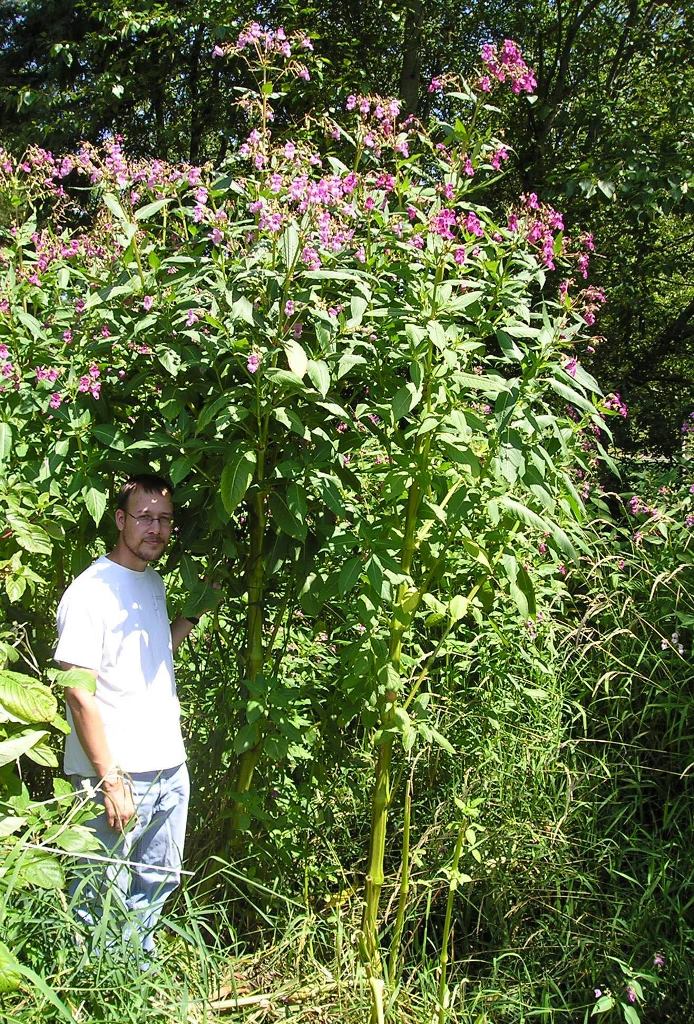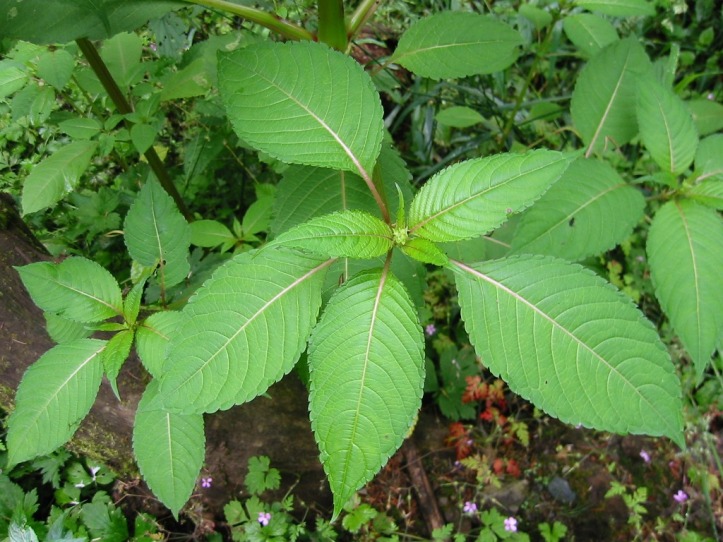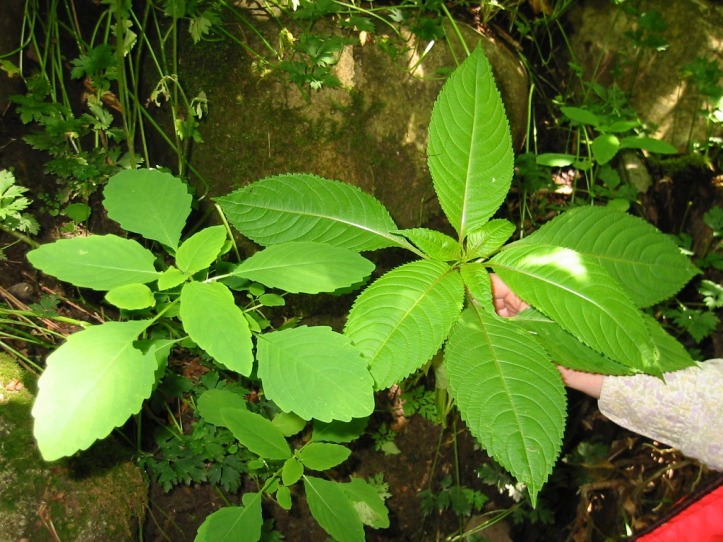In 1839, seeds of Impatiens glandulifera were sent from their native home in western Himalaya to the Royal Botanic Gardens in Kew, England. Within 15 years, populations had escaped and naturalized into the English countryside. By the 1900’s, the plant was widespread throughout England and Ireland. Today, it is considered one of Great Britain’s “Top 20” Alien Plants because of its abundance and distribution.

Policeman’s helmet, also known as Himalayan balsam or poor man’s orchid, continues to move into new parts of the world with the help of gardeners attracted by the pretty flowers and the naturalistic way it self-seeds in the garden and beyond. It is now naturalized in 31 countries on three continents (Europe, North America and Asia) and is rapidly expanding its range especially in Europe, Eastern Asia and North America.

In our region, policeman’s helmet is well-established in parts of western Washington and the lower Fraser Valley of British Columbia. In King County, we are fighting infestations in several areas including several creeks in Bellevue, Peasley Canyon in Auburn, Issaquah Creek in Issaquah, Thornton Creek and Carkeek Park in Seattle, and the Mountain View Road area of Duvall, among others.

Although this plant is only an annual, it can reach ten feet tall in wet, shaded areas, shorter in dry, sunny spots.

Pretty pink-purple to white flowers are present from June to October (shaded plants flower later) and seeds set within 13 weeks after flowering. When the seed capsules mature, they split open and eject around 800 seeds as far as 20 feet away. The seeds travel along waterways, can germinate under water and are viable in the soil for about two years.

Because of its shallow root system, policeman’s helmet can be effectively and easily pulled, if care is taken to remove the whole root. However, its stems will root at the nodes and re-grow if left on the ground.


Pulled stems should be crushed and dried or piled on tarps to compost. At least two years of follow-up monitoring is recommended to catch new plants germinating from the seeds in the soil. It’s critical to recheck the same area late in the summer or early fall to catch plants that flower later or were overlooked the first time through. Policeman’s helmet is really good at hiding among the salmonberry or blackberry bushes and can continue flowering into October, especially in shaded areas. A few overlooked plants can undo all your hard work.

No longer legal to sell in Washington State, policeman’s helmet remains a favorite trading plant among gardeners, who often find themselves with numerous volunteers to share with their friends and neighbors (not a nice thing to do to your friends). Policeman’s helmet is now on the state’s quarantine list of prohibited plants so garden sales should no longer have the species in their inventory.

Besides showing up near gardens, policeman’s helmet escapes into moist lowland forests, stream sides, and roadside thickets. This plant is a strong competitor and can reduce the fitness of native plant species and eventually replaces them in invaded sites. Left alone, this plant will continue to spread into riparian areas and to push out beneficial native plants.
Although quite distinctive when it flowers, policeman’s helmet (Impatiens glandulifera) can be confused before it blooms with another weedy member of the touch-me-not family called spotted jewelweed (Impatiens capensis). Spotted jewelweed flowers are orange with reddish spots, scalloped leaf edges (instead of the regular, small teeth on policeman’s helmet leaf edges), and is generally only a few feet tall. Spotted jewelweed is native to the eastern United States and was introduced here by gardeners and others beginning around 1950.


Similar to policeman’s helmet, spotted jewelweed can be quite weedy, especially in disturbed stream sides and other moist areas. However, policeman’s helmet is much taller and dominates other plants much more than spotted jewelweed. Spotted jewelweed is a Weed of Concern in King County but is not a state noxious weed in Washington.
Also, spotted jewelweed should not be removed without first getting a positive identification. There is a rare native found locally called spurless jewelweed (Impatiens ecornuta) that closely resembles spotted jewelweed. It can only be distinguished when it is in flower, and that can be tricky due to the presence of hybrids between the two species. Native spurless jewelweed flowers don’t have spurs and are not spotted.
Policeman’s helmet is a state noxious weed that is regulated in King County, so property owners and public agencies are required to remove it from their property. It is easiest to remove policeman’s helmet when it is in bloom, but before it seeds, since it is easy to find and easy to pull. Once policeman’s helmet has mature seeds on it, it is very hard to pull without spreading the seeds. The seeds are ejected from the pods with amazing force (this is fascinating to experience, but please put a bag around the seed pods before trying it!). Also, stems will re-root and flower again if left on moist soil or piled up. Crush the stems completely before leaving them to rot, preferably on a tarp or paved area. Bagging and discarding the plants is another option.

Please report infestations to us so we can survey the surrounding areas for new patches. If you have questions or would like more information about this or other noxious weeds in King County, Washington feel free to contact us by email or visit our website www.kingcounty.gov/weeds.